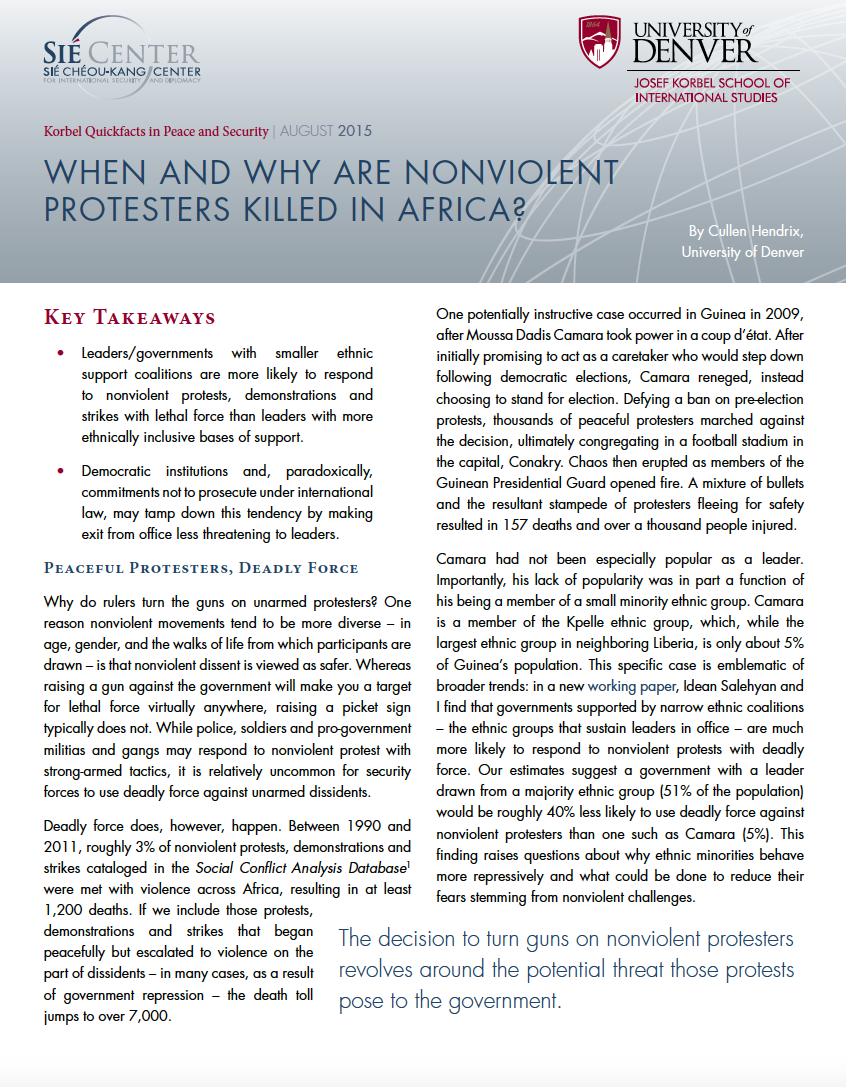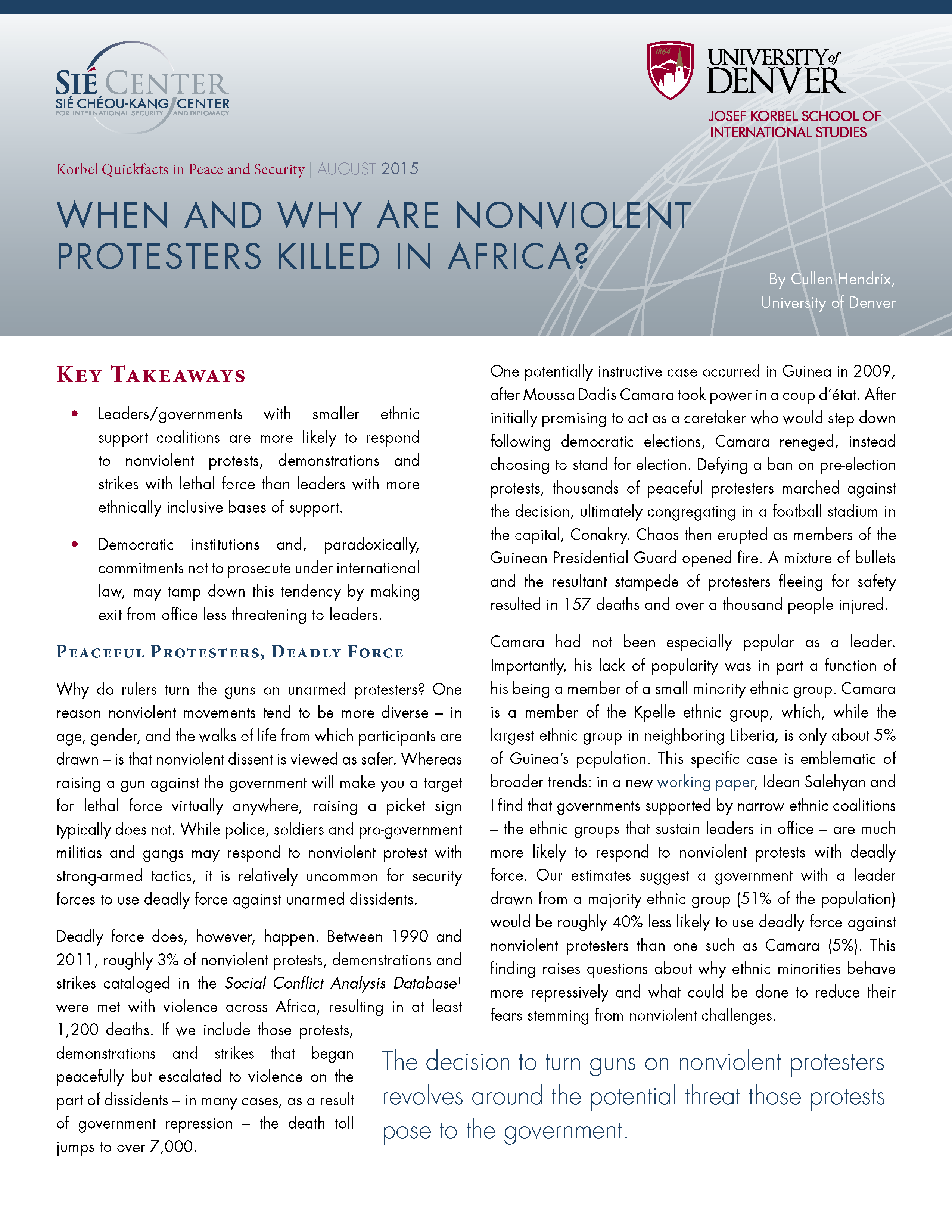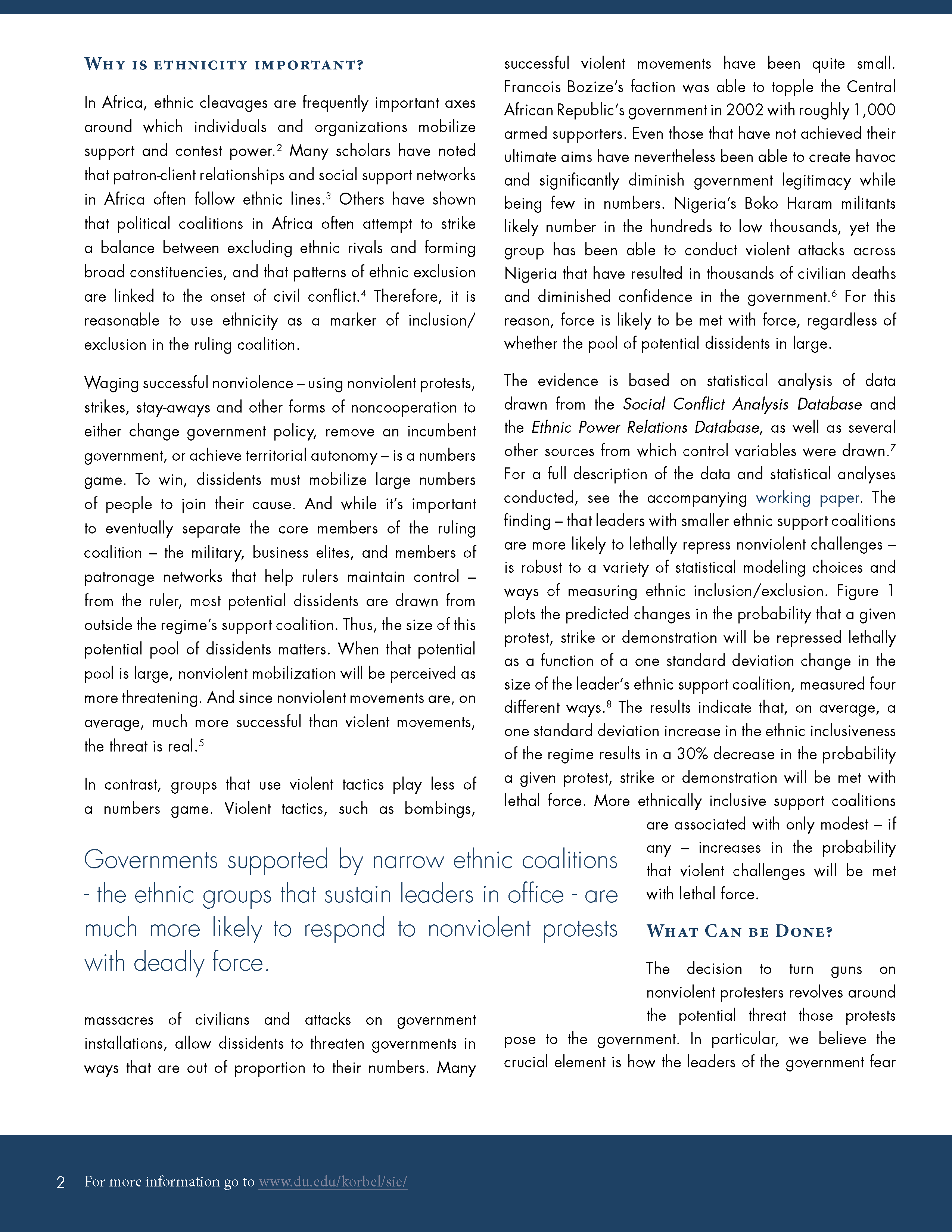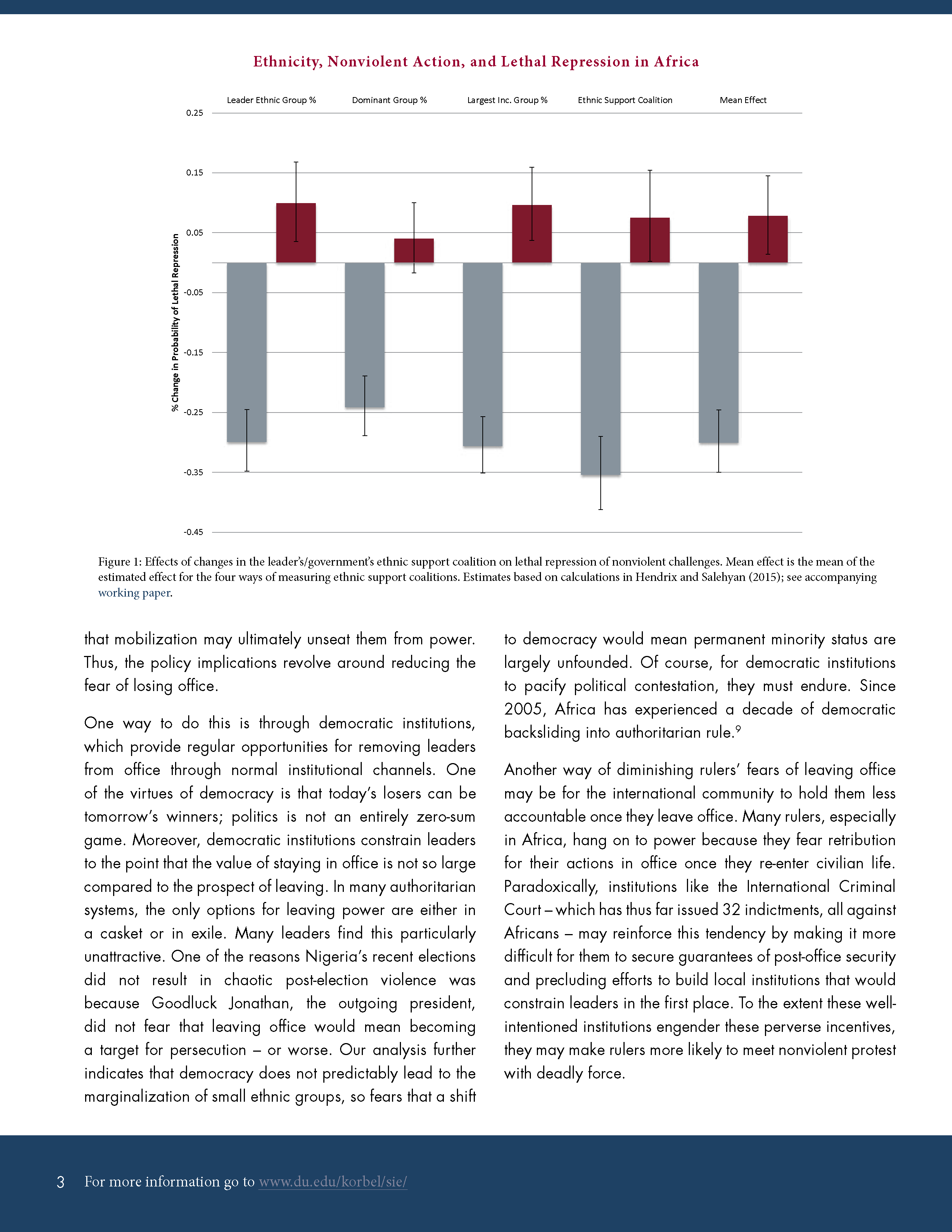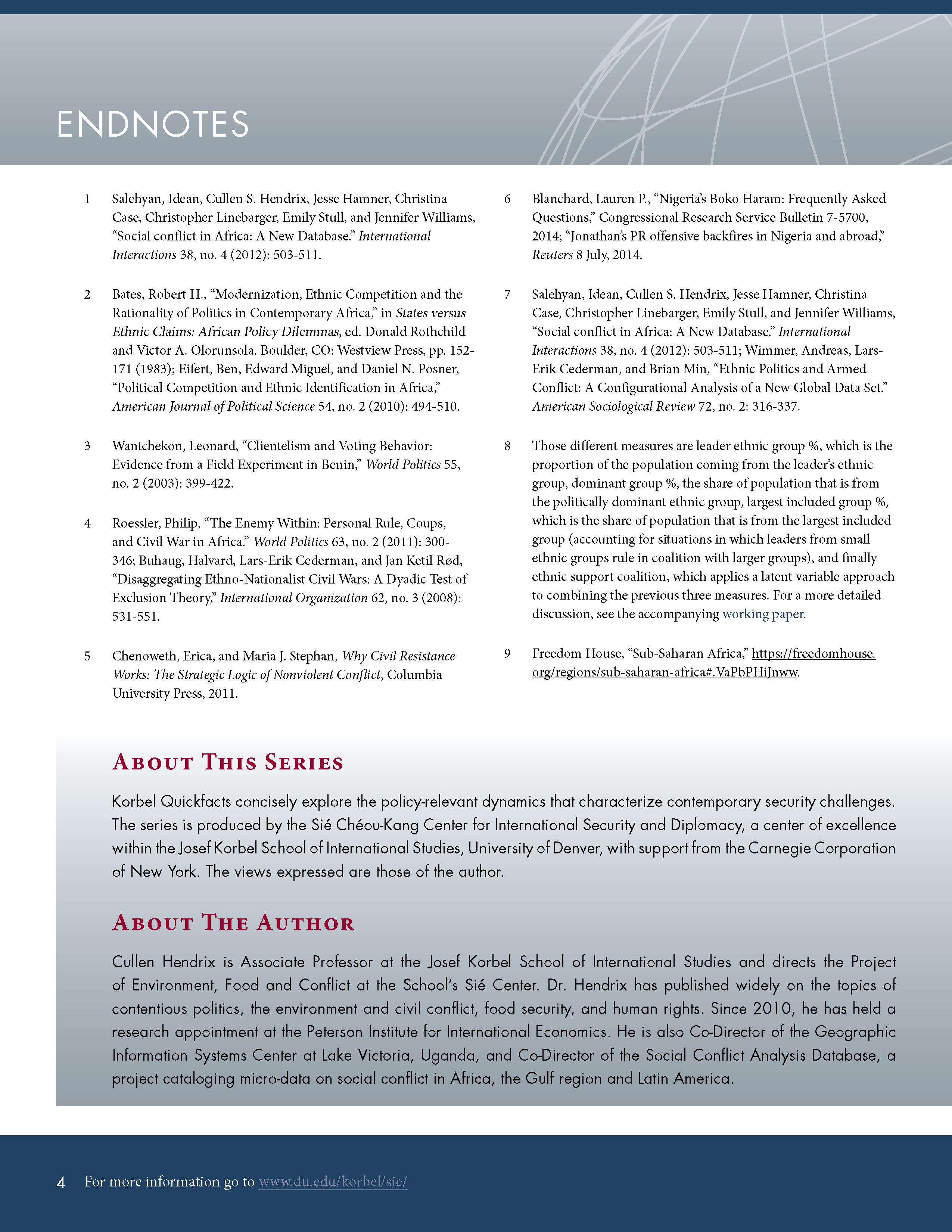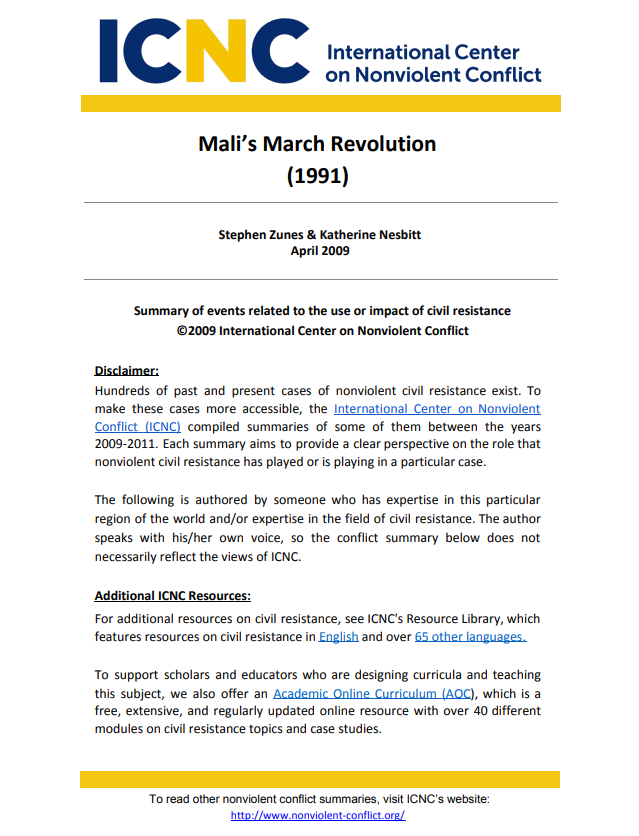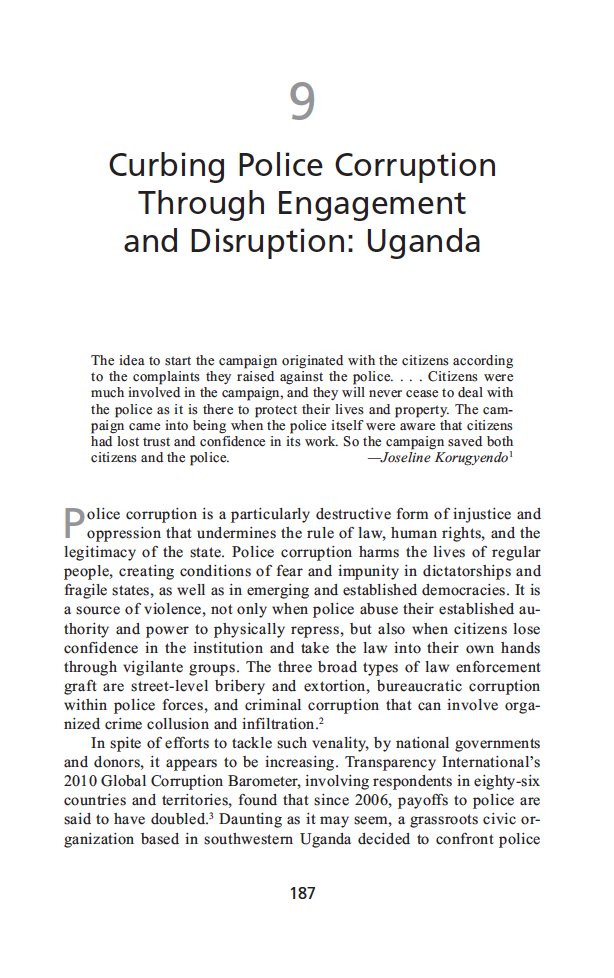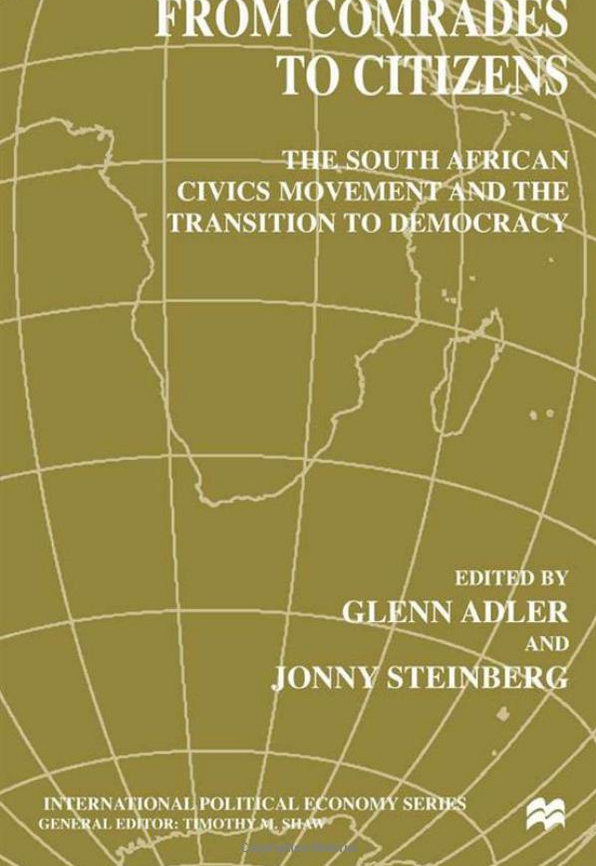When and Why Are Nonviolent Protesters Killed in Africa?
From the article: Why do rulers turn the guns on unarmed protesters? One reason nonviolent movements tend to be more diverse—in age, gender, and the walks of life from which participants are drawn—is that nonviolent dissent is viewed as safer. Whereas raising a gun against the government will make you a target for lethal force virtually anywhere, raising a picket sign typically does not. While police, soldiers and pro-government militias and gangs may respond to nonviolent protest with strong-armed tactics, it is relatively uncommon for security forces to use deadly force against unarmed dissidents.
Part of the Korbel School’s “Quickfacts” series, which concisely explores the policy-relevant dynamics that characterize contemporary security challenges.
Josef Korbel School of International Studies, August 2015
